#422ndInfantryRegiment
Text
1/422/106-ID - Forced March (Mohn) The Fate of the American POWs of the 106-ID)
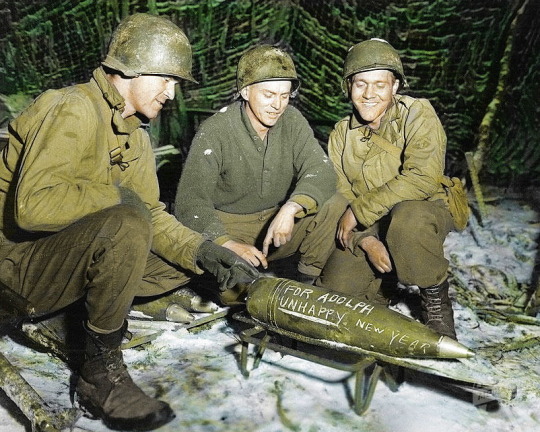
Source Document: Forced March Major John P. Mohn, HQ Co, 1st Battalion, 422nd Infantry Regiment, 106th Infantry Division


Forced March, from Schoenberg - St Vith (Battle of the Bulge, Belgium) to Berchtesgaden in Germany, is the Prisoner of War memoir of the 1200-mile forced march done by Maj John J. Mohn, Hq Co, 1st Battalion, 442nd Infantry Regiment, 106th Infantry Division, Golden Lion and has been extracted from a book published in Canton, Ohio, USA and printed by PPi Graphics, also in Canton Ohio, (ISBN-13:978-08-9863465-5-2).
Being a friend of Mandy Altimus Pond, Maj John J. Mohn's granddaughter, we talked about the publishing of this book on the EUCMH Website and agreed that this work would be a great way to render honor to Maj John J. Mohn and the terrible period he experienced while being one American Prisoner of War in Nazi Germany during the last year of WW-2. Before starting with the text, I would like the reader to notice that combat photos from a surrendered unit in the combat zone don't exist, especially with the 422 and the 423-IRs of the 106-ID. On the morning of Dec 16, 1944, these two infantry regiments, were trapped between two German main axes of penetration; on their front, elements of the 5.Panzer-Army (Manteufeul) coming from Blieaf in Germany and heading to St Vith and on their rear, elements of the 6.Panzer-Army (Dietrich) coming from Lanzerath and Manderfeld heading to Liège via St Vith, didn't give a one of a chance to these two Regimental Combat Teams (422 and 423) which once cut off, without supply, couldn't withdraw in any direction. These men combated up to the last cartridge, then destroyed all their guns, machine guns, and rifles, and finally surrendered.
Dedication
To my wonderful wife, Cheri, and loving daughter, Debora Mohn Altimus; without whose prodding and encouragement this book would never have been written. And to my son-in-law Richard Altimus who assisted in the computer editing of this book. Editor's Note: Additional thanks to my granddaughter, Mandy Altimus Pond, who helped me with the publishing of her grandpa's book.
Maj John J. Mohn, 1/442-IR, 106-ID

Foreword
When WW II's Battle of the Bulge began with a surprise German attack on Dec 16, 1944, troops of the US 106th Infantry Division occupied the most exposed American positions. They had been in the European continent for less than two weeks and cut off from reinforcements, were left to face the German onslaught alone. They fought back, standing their ground, but as their ammunition; food and medical supplies dwindled and the enemy noose drew tighter, over 7000 were ordered by their commanding officers to surrender to the surrounding German forces. Except for the Bataan Death March, this was the largest surrender of American troops during WW II.
Maj Mohn, of Akron, Ohio, the author of this book, was the Operations Officer of the 1/422-IR. He was a citizen-soldier who had volunteered to join the Army as a private in 1941. This is the story of his 1200-mile odyssey as a prisoner of war to the far reaches of the Nazi empire during which he and his fellow soldiers were starved, frozen, bombed, and shot. Because the Germans were unprepared to absorb a massive influx of American POWs and had little space to house them, Maj Mohn's imprisonment became an almost continuous five-month march through the collapsing and chaotic Third Reich. Initially, he was sent to a camp for American officers over 500 miles away from Poland. He

arrived there only to be marched out of the camp a few days later when the Russian forces broke through the German lines around Warsaw.
Seeing the prisoners as a potential bargaining chip and intent on keeping them out of Russian hands, the Germans forced the Americans to make a harrowing march westward across rural Poland and Germany in the dead of winter just ahead of pursuing Soviet forces. After this month-and-a-half ordeal, the prisoners finally arrived at the Hammelburg POW Camp in northern Bavaria, only about 100 miles away from where they started. Two weeks later this camp was attacked and briefly captured by a Task Force of Patton's 3-A. The Germans, however, soon recaptured the camp and immediately sent Maj Mohn and the other prisoners on another dangerous march which ended at the Austrian border five weeks later they were liberated by American troops.
Through it all, Maj Mohn preserved and returned to the USA where he underwent treatment and rehabilitation for injuries he had suffered as a prisoner of war. he returned to civilian life and developed a highly successful career as a psychologist. But his remarkable experiences in the military never quite left him. Eventually, he put words to paper and the result is the archive you are about to read - one of the very few accounts of this type ever to have been published. More than just a narrative of his experiences as a POW in Nazi Germany, it is a testament to the indomitable spirit of the US soldiers and a reminder to all of us of the sacrifices they made to preserve our freedom.
Before the Battle of the Bulge - Mandy Altimus Pond


About 1937, while attending Akron University, John Mohn took Reserve Officers' Training Corps. John had no desire to become an officer, but by the end of his training, he had reached the rank of 2nd Lieutenant. In preparation for what appeared to be an inevitable world conflict, Congress passed the Selective Service Act in 1940. This was the first peacetime conscription in US history. Enacted in September 1940, this act required men between 21 and 35 years of age to register with local draft boards. Men were drafted by a lottery system and were required to serve for twelve months. After that year was completed, John was told he would be draft-free and not required to sign up, should a war arise.
On Feb 4, 1941, John decided to enlist for this program and join the Navy. He drove to Cleveland, entered the Armory, and began the process. He took the written test, passed the physical, and was about to be sworn in when the commanding officer at the Armory said that John's teeth protruded too much and they would not accept him. John stated in an interview that 'this is stupid' and went to the other end of the Armory and enlisted in the Army. At this moment he could have enlisted as a 2nd Lieutenant because of his ROTC training. It slipped his mind and he enlisted as a Private.


John was assigned to the 37-ID at Camp Shelby, Mississippi. He volunteered for the Signal Company (Teletype) and the day after he signed up, the teletype was discontinued, so he was reassigned to supply in the Signal Company and was sent to Indiantown Gap Pa. On Dec 7, 1941, the Japanese attacked Pearl Harbor, and the next day upon request from President Franklin D. Roosevelt, Congress declared war on Japan and their ally Germany. This canceled the draft-free status that John had signed up for, as he had not completed his twelve months of training.
His division was scheduled to board a ship headed to the Pacific Theater of the war, but the boat blew up before they could head out.
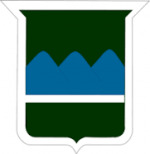
John was then sent to Fort Benning, Georgia, for officer training from February through April 1942. In late 1942, he was sent to Camp Forest and assigned to the 80-ID for a year. He became CO Fox Co, 1/319-IR, 80-ID. His division was in charge of clearing trees in the mountains in preparation for war games, training men in firing artillery, and surviving in realistic battle situations. John was in charge of the logistics and planning for the war games.
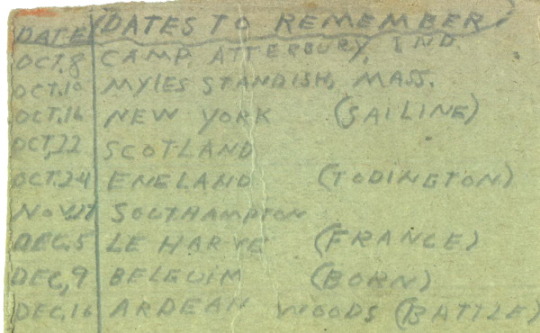
The 80-ID was then incorporated into the 106-ID. John was reassigned as Bn OP Officer and sent to Camp Atterbury, Indiana, and assigned to Hq Co, 1/422-IR, 106-ID. John reached the rank of Captain and was told that he was the youngest Captain in the Division. As Operations Officer, he was in charge of logistics for troop movements. He staged a large 3000-troop parade in Indianapolis in 1944. After our advance movement order was in, we received new equipment, turned in motor vehicles, and did what training we could at odd intervals.
Finally, in September we moved by rail to Camp Myles Standish at Taunton, Mass. This place was known as a staging area where life reached the maximum of not letting anyone know anything at all. We existed on a monotonous routine of rumors until the day we redoubled our tracks, returned to New York, boarded the RMS Aquitania, and departed for Gourock, Scotland, on Oct 21, 1944. The 423-IR with various attached units arrived Oct 27, and the 422 and 424-IRs arrived Oct 28 with the artillery and some special units. We moved then to England where we were deployed in one of the most interesting and certainly the most beautiful parts of this country, the Cotswold section of the midlands. The 422-IR was stationed some 12 miles west and northwest of Oxford, the 424-IR near Banbury of Banbury Cross fame, and the 423-IR, and the Division Artillery near Cheltenham and Gloucester respectively. Division headquarters and special units were located centrally in this 200-square-mile area.
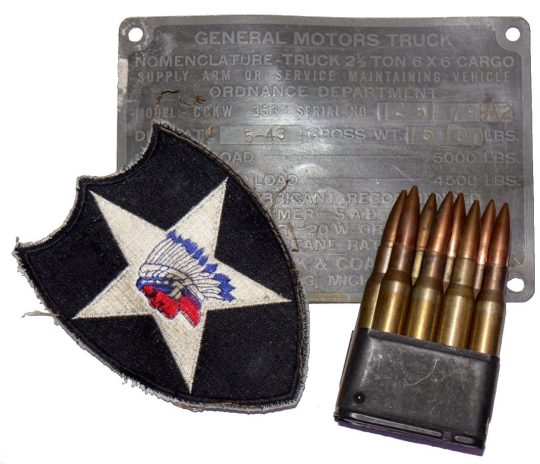
We remained in England preparing for an expected early crossing of the Channel. Between Nov 30 and Dec 1, the Golden Lions embarked on the long slow fifty-mile trip from Southampton to cross the Channel. We disembarked at Le Havre and at Rouen, a town about one-third of the way up the Seine toward Paris, and went into a bivouac in deep mud in the open fields in a cold drizzling rain, between the Dec 1/8.

During these days liaison officers from the 1-A headquarters arrived at odd intervals with conflicting and inconsistent sets of orders, so that during 48 hours we were assigned to three different corps in as many separate locations. Fortunately, troops and staff were arriving in unrelated groups as the weather and the Navy allowed them ashore so that no damage was done except to my disposition. The final messenger appeared on Dec 6 with instructions for us to leave for the St Vith area in Belgium. The first combat team to move, left the area on Dec 8, followed by the others as rapidly as possible. Upon arrival, we were to relieve the 2-ID, then in a defensive position, as part of the VIII Corps whose headquarters was then at Bastogne.
Troops being in the throes of landing after a rough winter crossing, staffs only partly present and maps few and far between, our move to the battlefield was a rather remarkable one and highly successful despite its discomfort. The route carried us nearly 300 miles through Amiens, Cambrai, and Maubeuge in France to Philippeville in Belgium. After an overnight bivouac in extra deep mud near the latter town, we passed through Marche and the villages of eastern Belgium to the vicinity of St Vith, arriving during the period Dec 9/15. The relief of the 2-ID's weary troops stationed along the quiet German border in the Belgian Ardennes Forest commenced on Dec 11, and was completed on Dec 13, responsibility for the defense of the sector passing to me on Dec 12. The troops of the Indian head Division assured the men of the Golden Lion Division that there would be little action on this hilly terrain in the middle of winter.
Edward P. McHugh

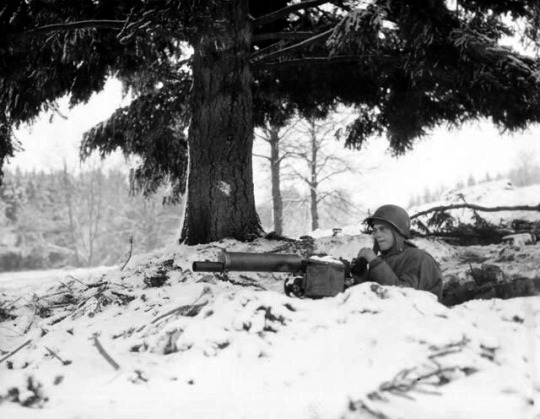
Preface - Maj John J. Mohn
It was Dec 16, 1944, somewhere along the Siegfried Line near St Vith, Belgium. The German counter-attack that would later be referred to as the Battle of the Bulge had begun. The gray, foggy dawn made a perfect umbrella for the German launching of an onslaught that nearly cost the Allies World War Two. What happened at the Battle of the Bulge may be a well-known story but none of the stories make any reference to the group of American Soldiers taken prisoner at that time and marched for 140 continuous days covering over 1200 long, cold, starvation-ridden, nightmare miles, terminated only by the end of the war in Europe.
Adversity is a mild term to describe the unbearable hardships endured by the ever-changing, ever-diminishing column of men. Temperatures dropped to ten degrees below zero (22°F). There were periods of fifteen days without a single bite of food. All suffered a phenomenal loss of weight (I weighed 65 pounds by the time of the liberation). We had inadequate clothing; many were without hats or gloves and at times no shoes. It was especially brutal for the poor Army Air Corpsmen who were only wearing thermal boots with no soles for walking when they were shot down and captured.
The journey was marked by frozen feet, legs, arms, faces, and even blood trails. Treachery, deceit, and fear are just feeble attempts to put into words the anger, horror, anguish, and despair felt by these military men.

The ordeal that the approximately 7000 US soldiers endured between Dec 16/44 and May 2/45 can only be epitomized by saying that a scant thirty of the original group even reached liberation as a unit. Losses of men beyond belief resulted from attempts at escape, exposure, starvation, the sadism of the German Guards, and being strafed daily by our own and Allied planes.
My book is not intended as a condemnation of the German People or Army but does make reference to differing attitudes and treatment by the Wehrmacht, to whom I owe a debt of gratitude for being alive, and the Elite SS Troops, who were constantly threatening our lives with attempts to exterminate us with machine guns and failed to provide even the most basic of necessities for our daily maintenance.
The German High Command seemed at a loss as to what to do with so many prisoners and lacked a plan regarding the disposition of us. The result was a wandering march covering three countries with no apparent purpose, with a final goal of holding us as hostages in Berchtesgaden at the end of the war. The consequences for us, as Prisoners of War, were painfully clear. The facts and sequences of events I know first-hand because I was there from the beginning to the end.
I saw dramatic changes in attitudes, values, behavior, and beliefs. Hidden strengths and weaknesses in the struggle for survival were surprising and at times frightening, but the salient factor through it all was that survival is 'All-Important' and that the 'Veneer of Civilization' is extremely thin.

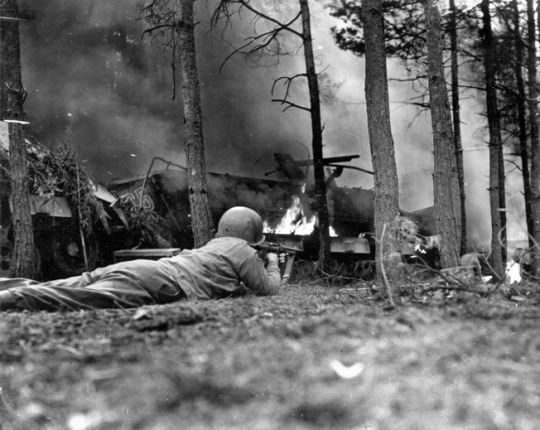
December 16, the Horror Begins
I couldn't help being reminded of that famous poem by Rudyard Kipling 'The Charge of the Light Brigade' on that fateful, foggy, grey, cold, drizzling morning Dec 16, 1944. The difference was that instead of 'cannons' noted in the poem, we had German tanks to the left of us, tanks to the right of us, tanks in front of us, and tanks behind us. To 'charge' ahead would have been to go down the steep slope of an evergreen-covered mountain. The landscape was so much like the mountain areas of Pennsylvania that it was hard to remember that we were in a foreign country fighting a very serious war. Even more seriously, we were surrounded and annihilated by German Panzer Divisions from the left and right of us. German artillery from the front was terrible enough but, to our dismay, the Germans had captured our artillery and were using our guns to fire upon us from the rear. When we called for supporting fire, they were aiming at us instead of their troops. Our Battalion Commander, Col Thomas Kent was killed by a shell coming in from the rear of our 'Pillbox' command post. At first, we thought our artillerymen were firing short of their target, but when we heard the German voice on our radio, we realized the awful truth - we were literally at their mercy. The divide-and-conquer strategy used in the German attack had been completely unexpected and effective.
Read the full article
#106thInfantryDivision#28thInfantryDivision#2ndInfantryDivision#3-A(US)#422ndInfantryRegiment#5.PA(German)#6.Panzer-Army#80-ID(US)#9-AD(US)#Afron#BalticSea#BataanDeathMarch#BattleoftheBulge#Belgium#Berchtesgaden#Bleialf(Germany)#CampMylesStandish#CampShelby#DeboraMohnAltimus#December1944#EdwardP.McHugh#Falkenberg#Fatherland#FortBenning#GenAllanW.Jones#GenevaConvention#Germany#HammelburgPWCamp#HQsCo1/422#IndiantownGap
2 notes
·
View notes
Text
7-AD – Withdrawal Behind the 82-A/B Lines December 1944
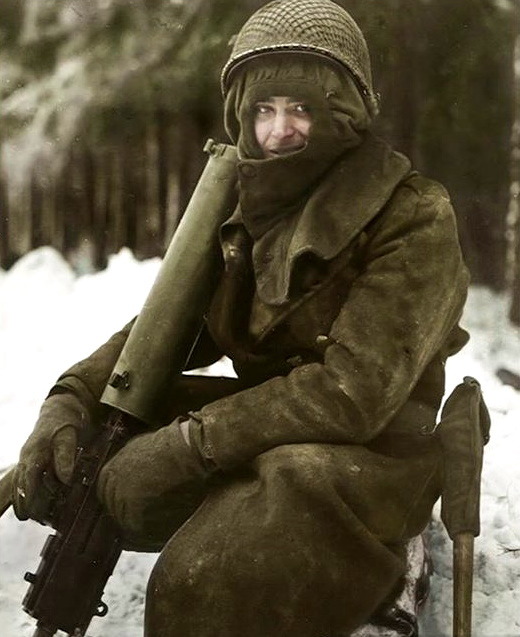
Document Source: (AAR) After Action Report (December 1944), Headquarters 7th Armored Division, December 1, 1944, – December 31, 1944, St-Vith & Vicinity, Belgium, Col John L. Ryan Jr, GSC, Chief of Staff

FOREWORD
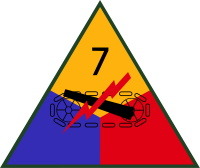
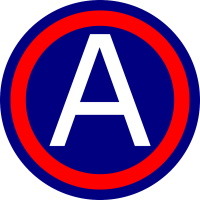
The 7th Armored Division was activated on March 1, 1942, reorganized on September 20, 1943, and sent to the United Kingdom in June 1944. The division landed in Omaha Beach and Utah Beach, on August 13/14, 1944, and was assigned to the US 3-A. The 7-AD drove through Nogent-le-Rotrou in an attack on Chartres which fell on August 18. From Chartres, the Division advanced to liberate Dreux, then Melun where the division crossed the Seine River on August 24. The 7-AD then pushed on to bypass Reims, liberated Château-Thierry and Verdun, August 31, halted briefly for refueling until September 6, when it drove toward the Moselle River and made a crossing near Dornot. This crossing had to be withdrawn in the face of the heavy fortifications around Metz.


The 7-AD then made attempts to cross again the Moselle River northwest of Metz but the deep river valley was not suitable terrain for an armored attack. Elements of the division assisted the 5th Infantry Division in expanding a bridgehead east of Arnaville, south of Metz, and on September 15, the main part of the division crossed the Moselle. The 7-AD was repulsed in its attacks across the Seille River at and near Sillegny, part of an attack in conjunction with the 5-ID that was also repulsed further north. On September 25, the 7-AD was transferred to the US 9-A and began the march

to the Netherlands where they were needed to protect the right (east) flank of the corridor opened by Operation Market Garden. They were to operate in southeastern Holland so that British and Canadian forces and the US 104th Infantry Division could clear the Germans from the Scheldt Estuary in the southwest Netherlands and open the shipping lanes to the critical port of Antwerp, to allow Allied ships to bring supplies from Britain.
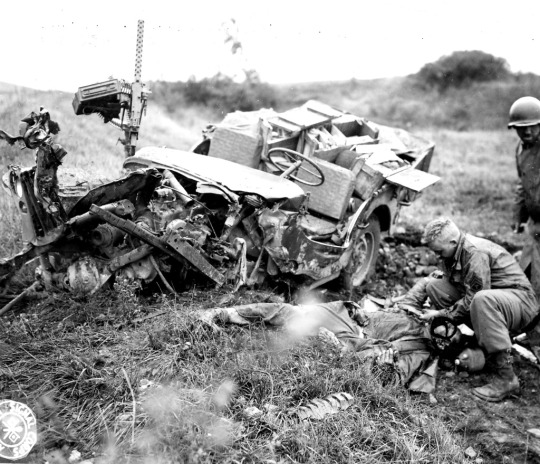
In September 1944, the 7-AD launched an attack from the north on the town of Overloon, against significant German defenses. The attacks progressed slowly and finally settled into a series of counter-attacks reminiscent of World War I trench warfare. On October 8, the 7-AD was relieved from the attack on Overloon by the British 11-AD and moved south of Overloon to the Deurne – Weert area. Here they were attached to the British 2-A and ordered to make demonstration attacks to the east, in order to divert enemy forces from the Overloon and Venlo areas, where British troops pressed the attack. This plan succeeded, and the British were finally able to liberate Overloon. On October 27, the main part of the 7-AD was in essentially defensive positions along the line Nederweert (and south) – Meijel – Liesel, with the demonstration force still in the attack across the Deurne Canal to the east. The Germans launched a two-division offensive centered on Meijel, catching the thinly stretched US 87-CRS (Cavalry Recon Squadron) by surprise. However, the response by the 7-AD and by the British VIII Corps to which the division was attached, stopped the German attack on the third day and from October 31 to November 8, gradually drove the enemy out of the terrain that they had taken. During this operation, at midnight on the night of October 31 – November 1, Gen Robert D. Hasbrouck replaced Gen Lindsay Silvester as Commanding General of the division.
On November 8, the 7-AD was again transferred back to the US 9-A and moved south to rest areas in the eastern vicinity of Maastricht. Following an inflow of many replacements, they began extensive training and reorganization, since so many original men had been lost in France and Holland that a significant part of the division was now men who had never trained together. At the end of November, the division straddled the Dutch-German Border with one combat command in Germany (in the area of Ubach–Palenberg, north of Aachen) and two in the Netherlands. Elements of the division were attached to the US 84th Infantry Division for operations in early December in the area of Linnich, Germany, on the banks of the Roer River.

DECEMBER 1, 1944
On December 1, the division order of battle was as follows:
CCA
– 48th Armored Infantry Battalion
– Able Co, 33rd Armored Engineer Battalion
– Dog Co, 87th Cavalry Recon Squadron Mecz
CCB
– 23rd Armored Infantry Battalion
– 31st Tank Battalion
– Baker Co, 33rd Armored Infantry Battalion
– Baker Co, 87th Cavalry Recon Squadron Mecz
– Dog Co, 203rd AAA Battalion
– Charlie Co, 814th Tank Destroyer Battalion
– 1st Plat, Baker Co, 814th Tank Destroyer Battalion
– 1st Plat, Recon, 814th Tank Destroyer Battalion
CCR
– 38th Armored Infantry Battalion
– Baker Co, 40th Tank Battalion
– Charlie Co, 33rd Armored Engineer Battalion
– Ordnance Detachment
– Medical Detachment
Division Troops
– 203rd AAA Battalion (-)
– 814th Tank Destroyer Battalion (-)
– 33rd Armored Engineer Battalion (-)
– 87th Cavalry Recon Squadron Mecz
Division Trains
– 129th Ordnance Maintenance Company (-)
– 77th Armored Medical Battalion (-)
– 446th Quartermaster Truck Company (-)
– 3967th Quartermaster Troop Transport Company (-)
– Baker Co, 203rd AAA Battalion
Division Artillery was under XIII Corps control and consisted of:
– 434th Armored Field Artillery Battalion
– 440th Armored Field Artillery Battalion
– 489th Armored Field Artillery Battalion
– Able Co and Charlie Co, 203rd Antiaircraft Artillery Battalion
Attached to the division were the:
– 814th Tank Destroyer Battalion
– 203rd Antiaircraft Artillery Battalion
– 446th Quartermaster Trucking Company
– 3967th Quartermaster Troop Transport Company
Detached from the division were the:
– 17th Tank Battalion (attached to the 102-ID)
– 40th Tank Battalion (-) Baker & Dog Cos (attached to the 84-ID)
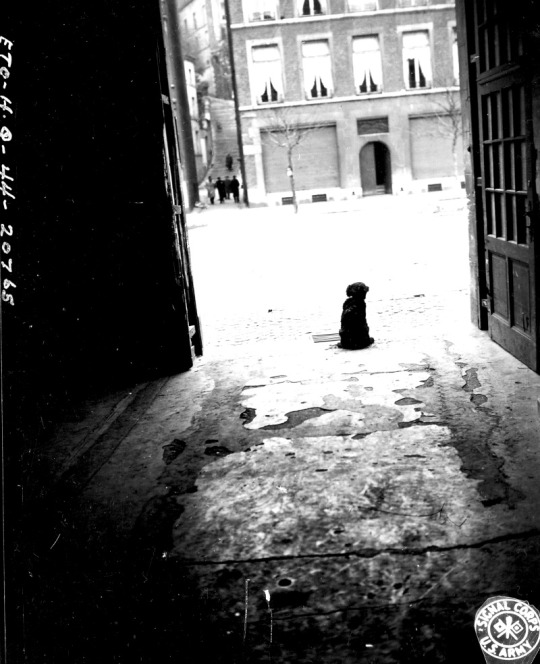

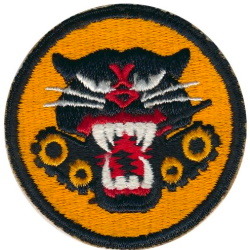
(CCR/7-AD), commanded by Col John L. Ryan Jr, was in the vicinity of Ubach, Germany, on December 1, 1944. The only divisional unit in action under division command was Baker Co 40th Tank Battalion which was supporting the 84th Infantry Division's operations in the vicinity

of Lindern. Able Co 40-TB was holding Lindern with elements of the 84-ID. Baker Co 40-TB was sent in to reinforce it. Due to enemy artillery concentrations on the supply route, supplies were brought to the two companies by means of the Blue Ball Express, an innovation using the light tanks of Dog Co 40-TB to bring up trailer loads of rations and ammunition under the cover of darkness.


(CCB/7-AD) under the command of Col Bruce C. Clarke, was alerted to move east of the Wurm River, Germany, to assemble at Gereonsweiller. The mission was to attack southeast from Lindern and to seize Linnich by passing through the 84-ID and 102-ID. The 814-TDB was to support the attack. However, due to the progress of the infantry divisions, it was not necessary

to commit CCB.
(CCA/7-AD) under Col Dwight A. Rosenbaum, located in the vicinity of Heerlen, Holland, was undergoing a training and maintenance program pending operations to the east.

DECEMBER 2, 1944


The Division Tactical Headquarters was established at Rimburg, Holland. CCB 7-AD moved east of the Wurm River. This placed two combat commands east of that river, prepared for immediate operations to the east, northeast, or north. At 0115, the elements of the 40-TB which had been attached to the US 84-ID were relieved from such attachment. Baker 40-TB was then attached to the US 84-ID. While prepared to repel any enemy counter-attacks, the division units continued with training and maintenance programs.
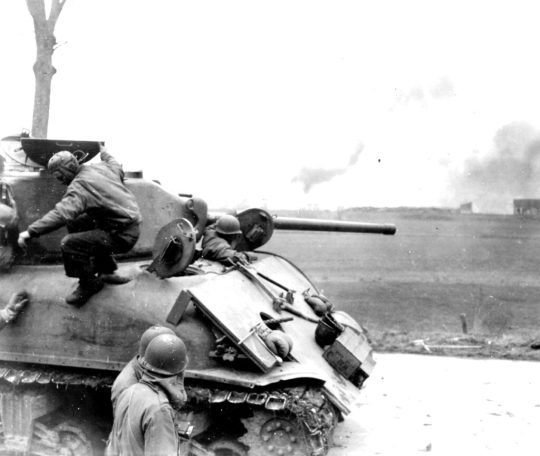
DECEMBER 3, 1944


At 1200, the 17-TB was relieved from attachment to the US 102-ID and returned to CCR 7-AD control. Proposed operations to the east were dependent upon the destruction of the enemy-held Roer River Dams, south of Düren. The enemy was capable of countering an Allied offensive in this area by flooding the Roer River Valley. This would result in either destruction of the troops in the flooded region or the cutting off of our supply lines. To eliminate this threat, Allied air forces made


several attempts to destroy the dam by bombing. The first attempt was made on December 3. While training and maintenance continued for the division as a whole, various divisional units were in action while under attachment to other commands. Baker Co 40-TB was attached to the US 84-ID from December 2, 1944, at 2230 to December 6, 1944, at 1600. Charlie Co 38-AIB

was also under attachment to the US 84-ID from December 3, 1944, at 2100 to December 6, 1944, at 1800. The 48-AIB was attached to the US 102-ID from December 5, 1944, at 1400 to December 9, 1944, at 2400 and the 17-TB was attached to the US 84-ID from December 9, 1944, at 1400 until December 16, 1944, at 2000.

During the period, detailed plans were made for seizing the town of Brachelen. The town was defended by the German 694.Infantry-Regiment, the 695.Infantry-Regiment and the 696.Infantry-Regiment from the 340.Infantry-Division. The attack was dependent upon the destruction of the Roer River Dams which would isolate the town. When one of the dams was broken it would take from 4 to 5 1/2 hours for the crest of the flood to reach Brachelen, and as the dam could not be bombed before 1000, the attack was to be launched the day after the destruction of the dam. CCB 7-AD was assigned the job of taking Brachelen. The plan of attack was outlined in Operations Instructions on December 11, at 0900, known as plan Dagger. CCA 7-AD was to move east of the Wurm River after CCB’s attack. Both combat commands were constituted as follows:
CCA
– 40th Tank Battalion
– 48th Armored Infantry Battalion
– Able Co, 33rd Armored Engineer Battalion
– Dog Co, 87th Cavalry Rcn Squadron (Mecz)
– Able Co, 814th Tank Destroyer Battalion
– 1st Co, Recon, 814th Tank Destroyer Battalion
– Detachment, 77th Armored Medical Battalion
CCB
– 23rd Armored Infantry Battalion
– 31st Tank Battalion
– 38th Armored Infantry Battalion
– Baker Co, 33rd Armored Engineer Battalion
– Baker Co, 87th Cavalry Recon Squadron (Mecz)
– Charlie Co, 814th Tank Destroyer Battalion
– 1st Plat, Baker Co, 814th Tank Destroyer Battalion
– Detachment, 129th Ordnance Battalion
– Dog Co, 203rd Antiaircraft Artillery Battalion
– Detachment, 77th Armored Medical Battalion
CCR
– 1 Squadron Recon, 814th Tank Destroyer Battalion
– Charlie Co, 33rd Armored Engineer Battalion

DECEMBER 10
Today, Col Bruce C. Clarke, Commanding CCB 7-AD, was promoted to brigadier general. At 1000, CCB 7-AD was placed in the Corps reserve.
DECEMBER 11
At 1500, CCB was released from the Corps Reserve and replaced by CCA 7-AD.
DECEMBER 13
Division Main Headquarters moved from Robroek to Heerlen, Holland, while the rest of the division continued training and maintenance, pending the destruction of the Roer River dam and the beginning of the operations Dagger.
DECEMBER 16

Read the full article
#104thInfantryDivision#23rdArmoredInfantryBattalion#3-A(US)#38thArmoredInfantryBattalion#40thTankBattalion#422ndInfantryRegiment#423rdInfantryRegiment#424thInfantryRegiment#48thArmoredInfantryBattalion#5thInfantryDivision#7thArmoredDivision#811thTankDestroyerBattalion#814thTankDestroyerBattalion#84thInfantryDivision#87thCavalryReconSquadron#Aachen#Antwerp#Arnaville#Aywaille#Bastogne#Beho#Born#Bovigny#Braunlauf#BritishForces#CanadianForces#CCB-7-AD#Chartres#ChateauThierry(France)#Cherain
0 notes